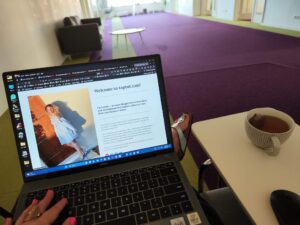The modern focus crisis: why we’re all struggling?
Staying focused at work can feel like a Herculean effort. It’s a common struggle, and it’s not just you. Our brains are constantly bombarded with information in today’s work environment, making focus a real challenge. One of the biggest culprits is the never-ending stream of notifications and emails. This digital overload fragments our attention and makes deep, focused work nearly impossible.
Want some tips on mastering productivity while working from home?
Check out this helpful resource: How to master working from home productivity.

Our physical workspace also plays a big role in our ability to concentrate. Open-plan offices, intended to encourage collaboration, can ironically become hotbeds of distraction. The constant hum of activity, movement, and visual stimuli can easily overwhelm us, making it tough to filter out the noise and zero in on what matters.
Beyond the office walls, evolving work patterns, especially the rise of remote work, blur the lines between our professional and personal lives. This makes it harder to set boundaries and dedicate time for focused work, regardless of whether we’re at home or in a traditional office setting.
The Real Impact of Distraction
The impact of these distractions is significant. A whopping 48% of employees admit to being productive less than 75% of the time. Even more concerning, 18% report being productive less than half the time. This isn’t about a lack of willpower; it’s a systemic problem stemming from our increasingly complex work environments. The data paints a clear picture: 79% of US workers get distracted within an hour, and almost 6 in 10 (59%) can’t maintain focus for even 30 minutes without getting sidetracked.
But there’s hope. Companies are starting to recognize the focus crisis and are investing in solutions, including technologies like AI to combat it. In fact, 90% of desk workers say AI boosts their productivity. For a deeper dive into these statistics, take a look at this resource: https://electroiq.com/stats/productivity-in-the-workplace-statistics/. By understanding the root causes of this widespread struggle, we can develop practical strategies that go beyond simple willpower and address the challenges of the modern workplace.
Designing Your Focus-First Workspace
Your workspace, whether it’s a busy office or a peaceful corner at home, has a big impact on your ability to concentrate. It’s not just about a clean desk; it’s about strategically designing your environment – both physical and digital – to minimize distractions and encourage deep focus. This means taking charge of your surroundings and building a space that actively helps you focus, not hinders it.
Taming the Physical Space
Think of your workspace as a blank canvas for productivity. What you place on it – and what you don’t – directly affects your attention. Clutter, for instance, is a constant visual distraction, pulling your focus away from your tasks. A clean, organized desk, free of unnecessary items, can significantly boost your concentration. Also, consider your desk’s placement. A spot near a window offers natural light and a view, but it can also be distracting if there’s a lot going on outside. Try different setups to find what suits you best.
Your overall office environment matters, too. If you’re in an open-plan office, the constant activity can make focused work difficult. Think about using noise-canceling headphones or creating a visual barrier with a plant. Small changes like these can significantly improve your ability to block out distractions.
Mastering Your Digital Domain
Just as a cluttered desk disrupts physical focus, a cluttered digital space disrupts mental focus. Think about your computer desktop: is it overflowing with files and icons? This visual clutter can be a major distraction. Organize your files into folders, clear your desktop, and close unnecessary windows or tabs.
Digital distractions like constant email and social media notifications are also major focus disruptors. Let’s face it, workplace distractions are a real obstacle to staying focused. To illustrate, let’s take a look at some statistics.
Let’s take a closer look at some of the common distractions and their impact:
Common Workplace Distractions and Their Impact
| Distraction Type | Average Time Lost Daily | Percentage of Workers Affected | Impact on Productivity |
|---|---|---|---|
| Meetings | 1 hour 43 minutes | 92% | Considered costly and unproductive |
| Digital Distractions | Up to 2 hours 36 minutes | Not specified, up to 32% on non-work tasks | Reduced output and focus |
| Social Media/Email | Variable, but significant | Widespread | Reduced focus and task completion |
These statistics paint a clear picture: distractions are eating into our workday. You can find more detailed statistics here: https://passivesecrets.com/workplace-distractions-statistics/. Minimizing these distractions is key. Try turning off non-essential notifications and scheduling specific times for checking email and social media.
Creating Focus Triggers

Finally, think about creating focus triggers. These are specific cues that tell your brain it’s time for deep work. This could be something as simple as lighting a scented candle, putting on noise-canceling headphones, or playing specific music. When consistently linking these cues with focused work, you’re training your brain to enter a state of deep concentration more easily. These seemingly small changes to your workspace, both physical and digital, can drastically improve your ability to focus. By creating an environment that supports your concentration, you’re setting yourself up for increased productivity and a more rewarding workday.
Time Management Methods That Transform Focus

A focus-friendly workspace is a great start, but let’s dive into some specific time management strategies that can truly supercharge your concentration. A well-structured workday is essential for maintaining focus in our busy world. We’re not talking about general productivity tips here. We’re exploring how specific time management techniques work with your brain to enhance your focus.
The Power of the Pomodoro
The Pomodoro Technique is a well-loved method that involves working in focused bursts. It uses 25-minute work intervals followed by 5-minute breaks. After four “pomodoros,” take a longer break of 15-20 minutes. This structured approach helps prevent burnout and maintain focus over longer periods. Those built-in breaks are key. They provide mental refreshers and prevent the concentration dips that often come with long stretches of uninterrupted work.
Time Blocking: Your Day, Your Way
Time blocking is a different approach. It involves assigning specific blocks of time to specific tasks or activities. This allows you to proactively plan your day, making sure you prioritize essential tasks and dedicate time for focused work. For example, you might block out 9:00 AM to 11:00 AM for deep work on a project, followed by a 30-minute block for checking email. This method boosts focus by minimizing context switching and allowing you to give your full attention to one task at a time.
Task Batching for Streamlined Efficiency
Task batching involves grouping similar tasks and completing them together. This minimizes mental shifts between different types of work, which improves both efficiency and focus. For example, instead of switching between writing, editing, and emails all day, you’d dedicate specific blocks of time to each activity. This keeps your workflow streamlined and helps you stay focused for longer.
Choosing the Right Method for You
The best method is the one that works for you. Experiment to find what best suits your work style. Look for signs of success like increased productivity, less stress, and a sustained sense of focus. Also check out this helpful article: How to leverage your time to increase productivity.
Think about your work style and the type of tasks you handle when choosing a time management method. Some people thrive with the structured bursts of the Pomodoro Technique, while others prefer the flexibility of time blocking. Experiment and adapt these methods to create a personalized system that maximizes your focus and productivity.
To help you choose, take a look at this comparison table:
Focus-Enhancing Time Management Methods Compared A comparison of different time management techniques, their best applications, and implementation tips
| Technique | Best For | Implementation Steps | Focus Benefit | Potential Drawbacks |
|---|---|---|---|---|
| Pomodoro Technique | Tasks requiring deep focus, breaking down large projects | Set timer for 25 minutes of work, 5 minutes of break. Repeat 4 times, then take a 15-20 minute break. | Structured breaks prevent burnout, improves concentration in short bursts | Can be disruptive for tasks requiring longer periods of uninterrupted focus |
| Time Blocking | Planning and prioritizing daily tasks, managing multiple projects | Allocate specific time slots to tasks in a calendar or planner. | Reduces context switching, dedicates focused time to important tasks | Requires careful planning and can be inflexible if unexpected tasks arise |
| Task Batching | Similar tasks, streamlining workflow | Group similar tasks together (e.g., all writing, then all editing). | Minimizes mental shifts, improves efficiency | May not be suitable for all types of work or for those who prefer variety. |
As you can see, each technique offers unique advantages and disadvantages. Try them out to discover what best supports your focus and helps you get more done!
Technology as Your Focus Ally, Not Enemy
It’s easy to blame technology for our scattered attention. We often see our devices as the enemy of productivity. But that’s not the whole picture. Technology can be a powerful tool for staying focused at work, as long as we use it strategically. It’s all about shifting our perspective: instead of a source of distraction, technology can become a focus enhancer.

Harnessing Technology for Focus
Successful professionals use technology to their advantage. They understand its power to amplify focus. Think about AI-powered focus assistants blocking distracting websites, browser extensions managing tabs and notifications, and automation tools streamlining repetitive tasks. These tools free up mental space for deep work by minimizing cognitive load and protecting attention.
The trick is choosing technology that addresses your specific focus challenges. If social media is your weakness, a website blocker like Freedom is essential. A notification manager can help you regain control if constant notifications are your downfall.
This strategic use of technology has a huge impact on productivity. Studies show that technology and automation can significantly enhance focus at work, with AI playing a key role. 90% of desk workers using AI report increased productivity, and 86% of COOs are investing in new technologies to boost output. Automating routine tasks can save employees at least 3.6 hours per week, giving them more time for important work. Tools that manage digital distractions are also becoming increasingly popular. For more productivity stats, check out this article: Workplace Productivity Statistics.
Creating Digital Boundaries and Habits
Just like we set physical boundaries in our workspace, we need digital boundaries, too. This means having clear rules about how and when we engage with technology. Notification protocols are key for protecting deep work time. Turning off non-essential notifications during focused sessions can make a big difference. Scheduling specific times to check email and social media helps avoid constant interruptions.
Developing technology habits that work with your brain is equally crucial. Consider using the Pomodoro Technique with a timer app like Focus To-Do or implementing a digital declutter at the end of your workday. When consciously shaping our digital environment and habits, we can transform technology from a focus drain into a focus enhancer. We reclaim control of our attention, using technology to support our goals, not sabotage them. In the end, technology’s impact on our focus comes down to how we choose to use it. With a mindful and strategic approach, we can transform our devices into powerful tools for deep, meaningful work.
The Engagement-Focus Connection You’re Missing
Want to boost your focus?
Time management and a quiet workspace are great, but they only scratch the surface. There’s a deeper piece of the puzzle that often gets missed: engagement. Real, lasting focus isn’t about forcing yourself to concentrate; it’s about building a connection with your work that draws you in. This means going beyond just checking off tasks and finding the deeper “why” behind what you do.
The Power of Purpose
Think about times you’ve been totally absorbed in something you love. Distractions just fade away, right? That’s the power of purpose in action. When your work aligns with your values and you see the value in what you do, focus becomes natural. It’s not just about enjoying your work; it’s about understanding why it matters. You might find this interesting: How to improve your workforce productivity levels.
This link between engagement and focus is backed by research. A surprising 36% of employees report feeling engaged at work. This means 51% are disengaged, and another 13% are actively disengaged. This lack of engagement has big consequences. For more detailed statistics, check out this link: https://www.hrcloud.com/blog/20-employee-engagement-statistics-you-need-to-know.
Building a more engaged workforce isn’t just about productivity, it’s about well-being, too.
Engaged employees experience 44% less stress, and companies with highly engaged teams see a 21% increase in profitability and 17% higher productivity.
Connecting With Your Work
So, how do you build this engagement? Start by figuring out what truly motivates you. What parts of your work resonate with you most? What are your core values, and how do they connect to your everyday tasks? Sometimes, the connection is clear. Other times, it takes some reflection. Even routine tasks can become more engaging when you see how they contribute to the bigger picture. For example, if you’re processing invoices, consider how this helps the company’s financial health, which supports your colleagues.
Communicating With Leadership
Talking to your manager is key. If you’re struggling to find meaning in your work, have an open conversation. Discuss your strengths, interests, and areas where you could make a bigger impact. Sometimes, a small change in responsibilities or a new project can re-energize you.
Cultivating a Growth Mindset
A growth mindset is important, too. This means seeing challenges as learning opportunities and setbacks as temporary bumps in the road. This mindset boosts focus by building resilience and belief in your ability to overcome obstacles. When you believe you can grow, you’re more likely to push through tough tasks and stay focused.
Focusing at work isn’t just about tricks and tools. It’s about building a strong connection with your work that powers your focus from the inside out. When making engagement a priority, you can unlock a deeper level of concentration that’s more effective and more fulfilling.
The Body-Brain Connection to Sustained Focus
Your physical state plays a huge role in your ability to concentrate at work. Think of your brain as a finely tuned machine. It needs the correct fuel, regular upkeep, and enough downtime to operate at peak efficiency. This means looking after your physical well-being isn’t just about health; it’s a key strategy for boosting your focus and productivity.
Fueling Your Focus With Nutrition
Just like a car needs proper fuel, so does your brain need specific nutrients for optimal performance. A diet full of fruits, vegetables, and lean protein delivers lasting energy and supports cognitive function. For instance, blueberries are full of antioxidants that protect brain cells, while fatty fish like salmon offer crucial omega-3 fatty acids needed for brain health.
This doesn’t mean you need to overhaul your diet immediately. Small, steady changes can have a big impact. Try trading those sugary snacks for a handful of nuts, or adding an extra serving of vegetables to your lunch. You’ll likely be surprised at how much these small changes can affect your energy and focus throughout the day.
The Exercise Advantage
Regular exercise isn’t just beneficial for your body; it’s incredibly effective for improving brainpower. Physical activity improves blood flow to the brain, delivering essential oxygen and nutrients. Even a quick walk at lunchtime can noticeably enhance your afternoon focus. Learn more in our article about Mental Clarity Exercises.
This better blood flow offers a ripple effect. It boosts memory, increases processing speed, and even encourages the growth of new brain cells. This shows that working movement into your day isn’t just a healthy habit, it’s a strategic investment in your thinking ability.
The Importance of Rest and Recharge
Sleep is frequently underestimated, yet it’s vital for maintaining focus. While you sleep, your brain stores memories, removes toxins, and gets ready for the next day. Aim for 7-8 hours of quality sleep every night to make the most of your cognitive skills.
A regular sleep schedule maintains your body’s natural rhythms, boosting your ability to concentrate during the day. It’s similar to refreshing your brain, letting you approach your work with a clear head and renewed energy. Furthermore, managing stress through techniques like mindfulness or deep breathing helps conserve cognitive resources, further supporting sustained focus. By prioritizing these elements of well-being – nutrition, exercise, and sleep – you’re not only looking after your body; you’re creating a solid platform for sustained focus and maximum cognitive performance at work.
Your Personalized Focus Blueprint
Let’s talk about creating a personalized focus strategy. This isn’t a one-size-fits-all approach. It’s about designing a focus blueprint specific to your own needs and situation. This means taking everything we’ve discussed and turning it into a practical, sustainable plan that really works for you.
Identifying Your Focus Obstacles
First, honestly assess your biggest focus challenges. What constantly breaks your concentration? Is it digital distractions, a noisy workspace, lack of real engagement with your work, or something else entirely? Finding these obstacles is like diagnosing a problem before finding a solution. This self-awareness is key to creating effective solutions.
Selecting Appropriate Countermeasures
Once you know your focus roadblocks, it’s time to choose specific strategies to tackle them. If digital distractions are your downfall, consider using website blockers like Freedom and notification management tools. If your physical workspace is the problem, think about decluttering, using noise-canceling headphones, or even finding a new place to work.
Implementing Changes in a Sustainable Way
Making lasting change requires a sustainable approach. This means implementing changes gradually, starting small. Trying to change everything at once can be overwhelming and lead to burnout. Instead, concentrate on building consistent habits. For example, if you want to use the Pomodoro Technique, begin with just one or two “pomodoros” a day and slowly increase them as you become more comfortable.
Tracking and Measuring Progress
Tracking your focus improvements is essential for understanding what works and what doesn’t. This means measuring meaningful results. Don’t just track how many pomodoros you completed. Evaluate how much you actually achieved during those focus periods.
You might be interested in: 3 tips for starting and growing your eCommerce site.
Maintaining Motivation and Adapting Your Strategy
Staying motivated requires celebrating small wins and accepting that setbacks happen. Be patient with yourself and adjust your strategy as needed. Your work demands will evolve, and so should your focus blueprint. Regularly reassess your focus challenges, adjust your countermeasures, and continue refining your strategy to stay on top of your game.
Following this personalized approach, you’ll build a concrete plan to dramatically improve your work focus. This blueprint guides you through the everyday challenges of the modern workplace and helps you reach your full potential. Ready to transform your focus and productivity? Visit Lorelei Web for practical advice and strategies to help you master your focus and achieve business success.

Lorelei has been an online entrepreneur, marketer and writer since 2006. Her biggest passion is WordPress, which is why she switched to being a full-time blogger 20 years ago and hasn’t looked back since. With so many years of experience behind her, she is an expert in copywriting, SEO, marketing and business strategies.






